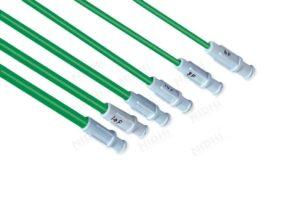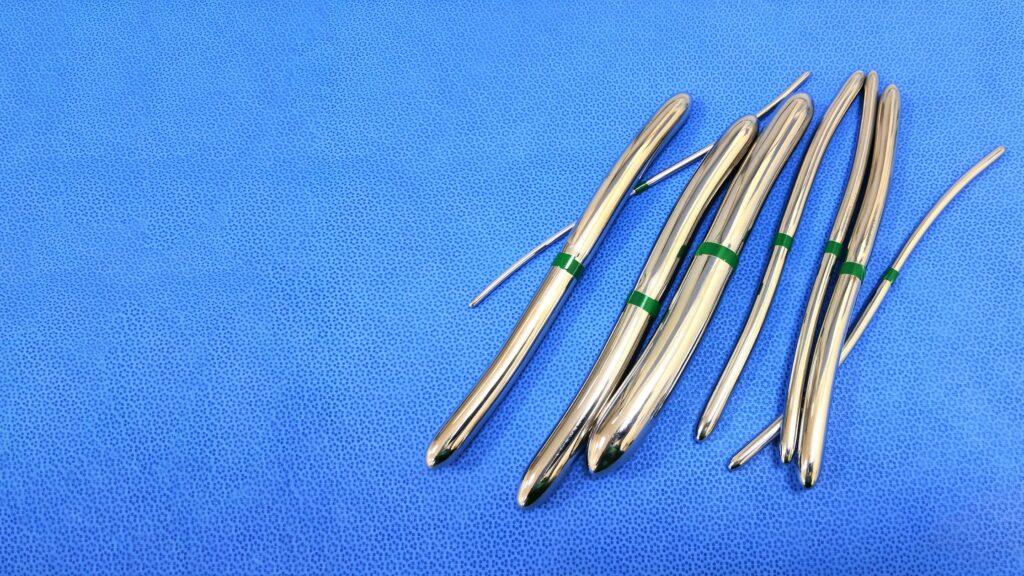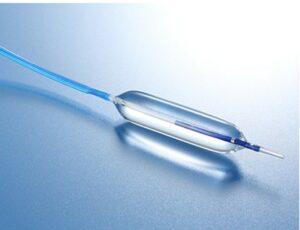In the dynamic field of medicine, advancements in medical devices continuously shape the way healthcare is delivered. Among these devices, dilators hold a significant place in enhancing medical treatments and ensuring patient comfort. This blog will take you on a journey through the world of dilators, exploring their purpose, applications, and the immense value they bring to the healthcare landscape.
Join us on this enlightening journey as we unravel the world of dilators, uncovering the advancements, innovations, and emerging trends that shape their future. Let’s explore how these remarkable devices contribute to enhancing medical treatments and transforming the patient experience.
What Are Dilators?: The Importance of Dilators in Medical Treatments
Dilators are medical devices designed to gently expand or stretch specific body openings or passages. These versatile instruments find applications across different medical disciplines, from gynecology to urology and beyond. They have proven valuable in assisting patients who have undergone surgical interventions, such as reconstructive surgeries or gender-affirming procedures. They aid in preventing the formation of scar tissue and adhesions by maintaining the desired size and shape of the anatomical structures, ensuring optimal healing and long-term functional outcomes.
Dilators serve as indispensable tools in various medical treatments. Their ability to gently expand and stretch body passages helps in recovery, improves patient comfort, and plays a vital role in enhancing overall health and well-being.
Exploring Different Types of Dilators
Dilators come in various types, each designed to meet specific medical needs and procedures. Understanding the different types of dilators can help healthcare professionals select the most suitable instrument for optimal patient outcomes.
- Vaginal Dilators: To stretch and widen the vaginal canal, vaginal dilators are commonly used in gynecological procedures. These dilators are typically tapered in shape, allowing for a gradual and comfortable insertion.
- Urethral Dilators: To widen the urethra, the tube that carries urine from the bladder, urethral dilators are used in urology procedures. They are beneficial in treating conditions like urethral strictures and bladder outlet obstructions.
- Esophageal Dilators: They aid in the management of conditions such as esophageal strictures and achalasia, a disorder affecting the esophageal muscles. Esophageal dilators are available in balloon or bougie forms.
- Rectal Dilators: Rectal dilators are designed to gently stretch and dilate the rectum. Rectal dilators vary in size and flexibility to accommodate patient comfort.
- Cervical Dilators: They come in different shapes, including laminaria tents and mechanical dilators, providing options for specific clinical requirements.
- Nasal Dilators: Nasal dilators are devices inserted into the nostrils to improve airflow and alleviate nasal congestion. They can be beneficial in managing conditions like nasal valve collapse and snoring.
- Bronchial Dilators: Bronchial dilators are used in respiratory medicine to widen the airways and facilitate easier breathing. Bronchial dilators can be inhaled through devices like metered-dose inhalers or taken orally as tablets or capsules.
Understanding the different types of dilators is essential for healthcare professionals to make informed decisions regarding their usage in medical procedures. Each type serves a specific purpose, contributing to improved patient outcomes and overall medical care.
Medical Uses of Dilators: Applications and Benefits
The medical uses of dilators are vast and encompass a wide range of applications across multiple specialties. These versatile devices have demonstrated their efficacy in various procedures, providing numerous benefits to patients. Understanding the diverse medical uses of dilators sheds light on their importance in modern healthcare. Let’s explore some common applications and benefits:
- Vaginal Health and Well-being: Dilators play a significant role in promoting vaginal health and improving overall well-being. They are used to address conditions like vaginal stenosis or vaginal atrophy, which can cause discomfort, pain, or restricted sexual activity.
- Urethral Strictures: Dilators of varying sizes and materials are inserted into the urethra to gradually widen the strictured area. This process helps restore normal urinary flow, alleviate symptoms like difficulty urinating or urinary retention, and improve overall urinary function.
- Esophageal Strictures: Dilators are used to stretch the narrowed esophagus, allowing food and liquids to pass through more easily, thereby alleviating swallowing difficulties and enhancing overall esophageal function.
- Anorectal Disorders: By gently stretching the anal sphincter muscles, rectal dilators help promote healing, reduce pain, and improve bowel movements. They can also assist in overcoming sphincter muscle tightness or spasms, leading to enhanced bowel control and comfort.
- Cervical Procedures: Cervical dilators are employed in various cervical procedures, including cervical ripening or dilation and curettage (D&C). These procedures involve widening the cervix to facilitate diagnostic examinations or surgical interventions.
Dilators for Vaginal Health: Improving Comfort and Well-being
Dilators have proven to be valuable tools in improving vaginal health and enhancing overall comfort and well-being. By gently stretching the vaginal walls, dilators help in reducing discomfort, increase flexibility, and restore normal function. Using dilators for vaginal health requires a systematic approach. It is crucial to start with smaller sizes and gradually progress to larger ones as the vaginal muscles become more relaxed and accommodating. Dilator therapy, under the guidance of a healthcare professional, involves regular sessions where the dilators are inserted into the vagina for a specified duration.
Remember, it is essential to consult with a healthcare professional specializing in vaginal health before starting dilator therapy. They will guide you on the appropriate technique, frequency, and duration of usage based on your specific condition and needs. Dilators, when used correctly, can be an empowering tool in achieving optimal vaginal health and improving overall comfort and well-being.
Safe Usage of Dilators: Guidelines and Precautions
When using dilators, safety should always be the top priority. Adhering to guidelines and taking necessary precautions ensures an effective and risk-free experience. Here are some essential safety measures to keep in mind:
- Consultation: Before initiating dilator therapy, consult with a healthcare professional experienced in the use of dilators. They will provide personalized guidance based on your condition and needs.
- Sterilization: Every time you use a dilator, clean and sterilize it thoroughly. Follow the manufacturer’s instructions for the appropriate cleaning method to maintain hygiene and prevent infections.
- Lubrication: Always use a water-based lubricant to facilitate smooth insertion and minimize discomfort. Avoid using oil-based or silicone-based lubricants, as they can damage the dilator material.
- Gradual Progression: Start with the smallest dilator size and gradually progress to larger sizes over time. Rushing the process may lead to discomfort or injury. Listen to your body and proceed at a comfortable pace.
- Relaxation Techniques: Practice relaxation techniques, such as deep breathing or meditation, before and during dilator insertion. This helps to ease tension and promote a more comfortable experience.
- Proper Insertion Technique: Gently insert the dilator into the vaginal opening at a comfortable angle. Apply steady and gentle pressure, allowing the muscles to relax and accommodate the dilator.
- Regular Usage: Consistency is key for effective results. Follow the recommended frequency and duration of dilator therapy as advised by your healthcare professional.
By following these guidelines and taking necessary precautions, you can ensure a safe and effective dilator therapy experience, maximizing the benefits and minimizing any potential risks.
Must-Have Accessories for Dilators: Enhancing Usage and Convenience
When it comes to using dilators, having the right accessories can significantly enhance the overall experience and convenience. These accessories are designed to complement dilator usage, providing added comfort, ease, and effectiveness. Here are some must-have accessories for dilators.
- Lubricants: A water-based lubricant is essential for comfortable insertion and minimizing friction. Choose a high-quality lubricant that is compatible with the dilator material.
- Storage Case: Investing in a storage case keeps your dilators clean, organized, and protected. Look for a case with individual compartments to ensure proper separation and hygiene.
- Applicators: Applicators are useful for applying lubricant to the dilator or vaginal opening. They allow for hygienic and controlled application, minimizing waste and mess.
- Dilator Handles: Some dilators come with detachable handles for improved grip and control during insertion. These handles provide added convenience, especially for individuals with limited dexterity.
- Cleaning Supplies: Having appropriate cleaning supplies, such as mild soap or specialized cleaning solutions, is essential for maintaining the hygiene of your dilators.
- Comfort Cushions: Soft cushions or pads can be placed on the base of the dilator for added comfort during usage. They help prevent discomfort or pressure on sensitive areas.
- Instructional Resources: Consider obtaining instructional resources, such as books, videos, or online guides, that provide detailed information and techniques for effective dilator usage. These resources can offer valuable insights and tips for maximizing the benefits of dilator therapy.
Medical Procedures Involving Dilators: Insights and Process
Understanding the insights and processes behind medical procedures involving dilators provides valuable knowledge about their applications and outcomes.
- Gynecological Procedures: Vaginal dilatation involves inserting dilators to widen the vaginal canal, improving access during examinations, biopsies, or surgeries. Hysteroscopy uses dilators to dilate the cervix, enabling the insertion of a hysteroscope for visual examination and treatment of the uterus.
- Urological Procedures: Urethral dilation widens the urethra to address strictures or urinary retention, promoting better urine flow.
- Proctological Procedures: Anal dilatation stretches the anal sphincter muscles, relieving conditions like fissures or stenosis. Anorectal manometry uses dilators to assess anal sphincter function, aiding in diagnosing bowel disorders.
- Cardiovascular Procedures: Angioplasty may involve using dilators to expand narrowed or blocked blood vessels, restoring normal blood flow.
Understanding the role of dilators in medical procedures provides insights into their significance in diagnoses, treatments, and patient care across specialties. Dilators enable accurate diagnoses, effective treatments, and improved outcomes in various medical specialties.
Materials Used in Dilators: Understanding Construction and Benefits
Dilators, crucial medical instruments used in various procedures, are constructed using different materials, each with specific benefits for medical applications:
- Medical-Grade Silicone: Silicone dilators offer flexibility, smooth texture, and hypoallergenic properties. They allow for easy insertion and gentle stretching of body cavities without causing discomfort or irritation.
- Stainless Steel: They provide precision and control during medical procedures. Stainless steel dilators are preferred for their durability and hygiene.
- Glass: Glass dilators have a smooth, non-porous surface and resistance to chemical reactions. They are easy to clean and retain heat or cold well, allowing for temperature-based therapies.
- Natural Rubber/Latex: Natural rubber or latex dilators provide flexibility and elasticity. However, latex allergies are common, and alternative materials should be used for sensitive individuals.
- Hybrid Materials: Some dilators combine different materials to leverage their benefits. For example, a dilator may have a silicone coating on a stainless steel core, providing flexibility and durability.
The choice of material depends on the procedure, patient requirements, and the healthcare professional’s preference. Proper sterilization and maintenance are crucial to minimize infection risks. Healthcare providers must select the appropriate material to optimize patient comfort, procedural efficiency, and treatment outcomes.
Choosing the Right Size Dilators: Ensuring Comfort and Effectiveness
Choosing the right size dilators is crucial for ensuring both comfort and effectiveness in medical procedures. The proper selection of dilator size depends on the specific purpose of use and the individual’s anatomy. Here are some considerations to keep in mind when choosing the right size dilators:
- Consultation with Healthcare Professional: Seek guidance from a healthcare professional experienced in dilator usage. They can assess your medical condition, provide recommendations, and guide you in selecting the appropriate dilator size.
- Gradual Progression: Start with smaller dilator sizes and gradually progress to larger ones as the body adjusts and becomes more comfortable. Rushing the process may cause discomfort or injury.
- Individual Anatomy: Consider factors such as vaginal or anal dimensions, pelvic floor muscle tone, and any existing medical conditions that may affect the choice of dilator size. Everyone’s anatomy is unique, and personalized recommendations are essential.
- Comfortable Insertion: The chosen dilator should allow for smooth and comfortable insertion without excessive pressure or discomfort. It should gently stretch the targeted area without causing pain.
- Targeted Outcome: Different medical procedures may require dilators of varying sizes to achieve specific goals. For example, dilators used for vaginal health may focus on restoring flexibility and comfort, while dilators used in urological procedures may aim to widen strictures or facilitate drainage.
- Graduation Markings: Some dilators have graduation markings along their length, indicating incremental sizes. These markings can assist in monitoring progress and ensuring consistent usage.
Emerging Trends in Dilator Design: Improving Functionality and Patient Comfort
Dilator design is evolving with advancements in technology, focusing on enhancing functionality and improving patient comfort. Several emerging trends are shaping the field of dilator design, aiming to optimize medical outcomes and provide a better user experience.
- Ergonomic Shapes: Manufacturers are exploring ergonomic designs that offer better grip and control during insertion. These designs ensure ease of use for healthcare professionals and patients, minimizing discomfort and enhancing precision.
- Adjustable Dilators: Adjustable dilators allow customization based on individual needs and progression. They feature a modular design with interchangeable components, enabling adjustments in size, length, or flexibility as required.
- Vibrating Dilators: Some dilators incorporate vibration mechanisms to provide therapeutic benefits. The vibrations help relax muscles, reduce discomfort, and improve blood circulation. Vibrating dilators can enhance the overall experience and promote relaxation during usage.
- Temperature Control: Dilators with temperature control features are gaining popularity. They can be warmed or cooled to provide soothing effects and increase patient comfort during insertion.
- Smart Dilators: With the rise of digital health, smart dilators equipped with sensors and connectivity capabilities are being developed. These devices provide real-time feedback on usage, track progress, and offer personalized guidance through mobile applications or connected platforms.
These emerging trends in dilator design aim to improve functionality, increase patient satisfaction, and optimize medical outcomes.
Dilators From Leading Indian Manufacturers
Biliary Balloon Dilator
Medinova Endosys manufactures biliary balloon dilators, specifically designed for the dilation of papilla or biliary strictures through the scope. These dilators offer a range of small inflated diameters, providing flexibility in addressing various patient needs. With radiopaque markers incorporated into their design, these dilators ensure easy visibility under fluoroscopy, allowing for precise positioning during procedures.
Each biliary balloon dilator is carefully packed in sterile packs, ensuring aseptic conditions for patient safety. The compatibility of these dilators with a 0.035″ guide wire further enhances their functionality and ease of use. Medinova Endosys’s biliary balloon dilators are trusted by medical professionals for their reliability and effectiveness in biliary dilation procedures.
Fascial Dilator Set
 Nidhi Meditech Systems introduces its fascial dilator set, an essential device used for uterine dilation before ureteroscopy or stone manipulation. This set offers smooth surfaces, ensuring ease of use and minimizing trauma during procedures. The uniform taper layer on all sides of the dilator set further reduces the risk of complications and enhances patient comfort.
Nidhi Meditech Systems introduces its fascial dilator set, an essential device used for uterine dilation before ureteroscopy or stone manipulation. This set offers smooth surfaces, ensuring ease of use and minimizing trauma during procedures. The uniform taper layer on all sides of the dilator set further reduces the risk of complications and enhances patient comfort.
To meet stringent quality standards, the fascial dilator set is packed in blister trays with Tyvek paper, adhering to the EN-868-5 series standard for sterilization packaging. The product is available in two sizes, 6 or 16 French (FR), providing medical professionals with options to suit their specific requirements. Nidhi Meditech Systems’ fascial dilator set is a reliable choice for urological procedures requiring safe and effective dilation.
PANZER Multi-Stage Balloon Dilator
Medorah Meditek Pvt. Ltd., a leading manufacturer and supplier of medical devices in India, presents the PANZER Wire Guided Multi-Stage Balloon Dilator. This advanced device facilitates the endoscopic expansion of strictures in the esophagus, colon, duodenum, and pylorus of the gastrointestinal tract. The high-pressure resistant material used in its construction ensures safe and effective dilation procedures.
PANZER Wire Guided Multi-Stage Balloon Dilator is designed with two radiopaque marks, enabling precise positioning and visualization through x-ray imaging. With three different diameters available, along with three pressure levels, medical professionals can tailor the dilation process according to patient requirements. The atraumatic catheter tip further enhances patient safety and comfort during procedures. This dilator is compatible with various guidewires, providing versatility in clinical settings.
Conclusion
Dilators play a crucial role in various medical treatments and procedures. Their purpose and applications extend beyond mere instruments, as they contribute to patient comfort, recovery, and overall well-being. Understanding the different types of dilators available helps medical professionals tailor their usage to specific requirements.
Medical procedures involving dilators require a thorough understanding of the process and expected outcomes. Different materials used in dilator construction offer unique benefits, ensuring optimal performance and patient comfort. Selecting the appropriate size dilator is crucial for maximum effectiveness and comfort during medical interventions.




